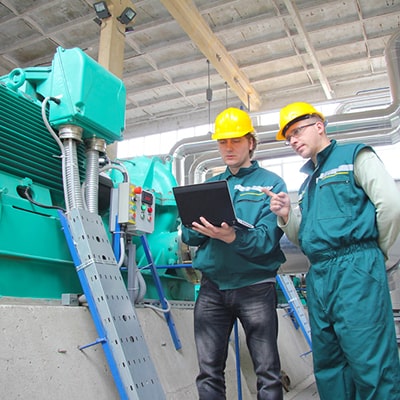If your daily Gemba Walk doesn’t go beyond the walls of your own department or building, you’re only walking half the distance you should!
Continuous improvement is a contact sport—it doesn’t take place while sitting at your desk, it takes place on your feet while engaging with your people—and that includes customers and vendors. We’ll come back to your customers and vendors in just a moment—first, let’s review what a Gemba Walk is.
What’s a Gemba?
 Gemba means ‘the place where something is happening.’ In the manufacturing sense, it means ‘the place where the work gets done’ or more importantly, ‘the place where value is created.’
Gemba means ‘the place where something is happening.’ In the manufacturing sense, it means ‘the place where the work gets done’ or more importantly, ‘the place where value is created.’
We’ve discussed the importance of having a Gemba Walk in a previous blog and video and how to conduct a Gemba Walk in an online presentation, so we won’t cover that here.
A daily Gemba Walk is a mechanism or ritual that effective leaders use to stay informed about everything going on in their organization. It facilitates innovation and makes possible the teaching of values to every member of an organization. Listening, facilitating, and teaching and reinforcing values—what is this except leadership? Leading is primarily paying attention.
Taking a Gemba Walk a few steps further
At its best, daily Gemba Walks allows you to learn the names of and make personal connections with the people that are doing the work—but that’s not all. An effective Gemba Walk includes observing customers being helped and going away happy—or the opposite; you see the effectiveness of your business practices, or their inadequacies. As a leader, don’t you think such knowledge would make you far better at your job?
Take a Gemba Walk to and with your customers and vendors
As often as possible expand your Gemba Walk to include time with your customers and vendors. Gain understanding and insight into how they need and use your product or service.
The vendor Gemba Walk
One parts supplier in the automotive industry said this about what makes Toyota different than domestic auto manufacturers: “Toyota helped us dramatically improve our production system. We started by making one component, and as we improved, Toyota rewarded us with orders for more components. Now, Toyota is our best customer.”
Unlike most companies we know, Toyota and Honda take the trouble to learn all they can about their suppliers. They believe they can create the foundations for partnerships only if they know as much about their vendors as the vendors know about themselves. They don’t cut corners while figuring out the operations and cultures of the firms they do business with. Toyota uses Gemba Walks by sending executives to see and understand for themselves how suppliers work. Honda uses a similar approach, and both companies insist that managers at all levels—right up to their presidents—study suppliers firsthand to understand them.
Understand how your suppliers work
Extending your Gemba Walk to your vendors will enable you to learn about their businesses and see how they work. It also reinforces a commitment to coprosperity. By taking the time with your vendor, you can develop a common lexicon and provide immediate and constant feedback—this creates joint learning between you and your supplier network.
The customer Gemba Walk
 A customer may not be your number one choice for a Gemba Walk, but consider it nonetheless. What you think your customers want and what they value could be two different things. The key about the Gemba Walk is putting you in the shoes of being the customer, and you end up feeling like you are a customer. Would you enjoy the experience that you’ve created in that service design? What can you do to design your service system to do a better job to delight customers?
A customer may not be your number one choice for a Gemba Walk, but consider it nonetheless. What you think your customers want and what they value could be two different things. The key about the Gemba Walk is putting you in the shoes of being the customer, and you end up feeling like you are a customer. Would you enjoy the experience that you’ve created in that service design? What can you do to design your service system to do a better job to delight customers?
However, instead of guessing, take a Gemba Walk with your customer and ask specific questions. Some questions to consider (these could apply to vendors and suppliers also) might be:
- What’s the most recent example of how we have exceeded your expectations on this project?
- Is there a recent example where we have not met your expectations?
- What is the one thing none of your vendors do that you wish they would?
- What would have made your experience with us better?
- How can I help provide more value to your organization?
- What is the problem that, if solved, would make the biggest difference to your life?
- What’s the main benefit you receive from our product/service?
Gemba Walking with your customer (and suppliers) alerts you to potential issues before they become negative experiences. Time with your customers not only makes your customers happier, it leads to higher revenue potential as well.
More Gemba walk resources:
Blog: What is a Gemba walk?
Blog: What are the gemba walks you’re avoiding?
Video: Going on a Gemba walk. (5:43).
Webinar presentation: Gemba walk your way to excellence. (44:56).



